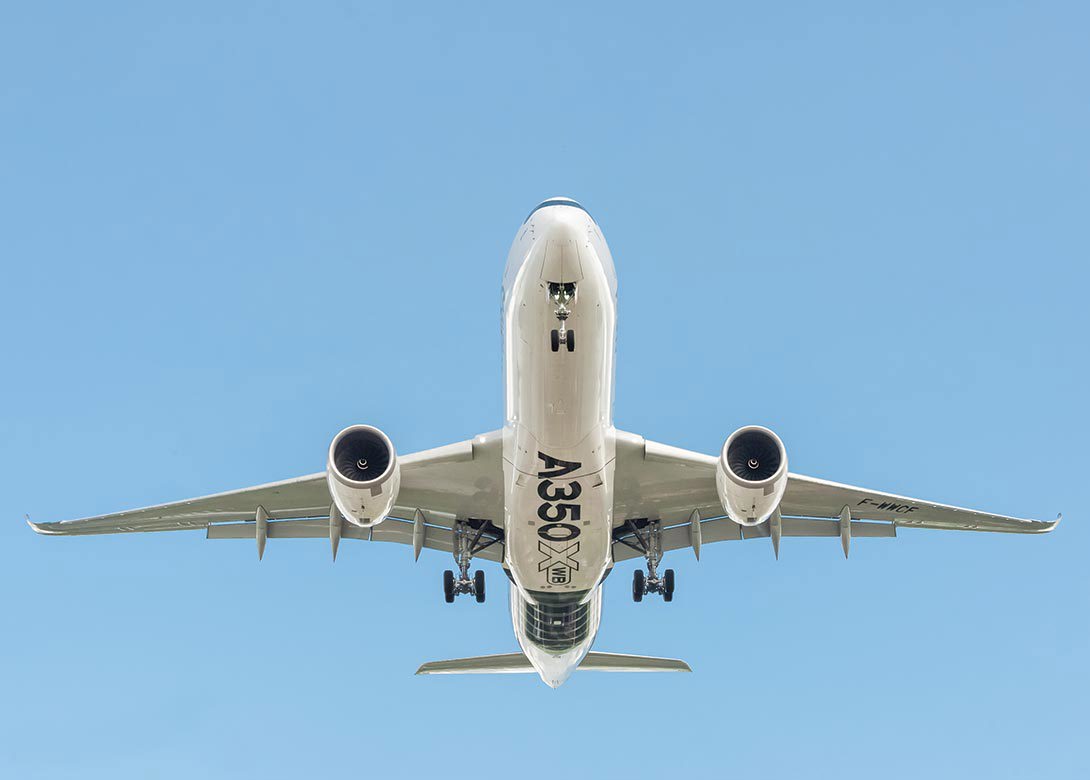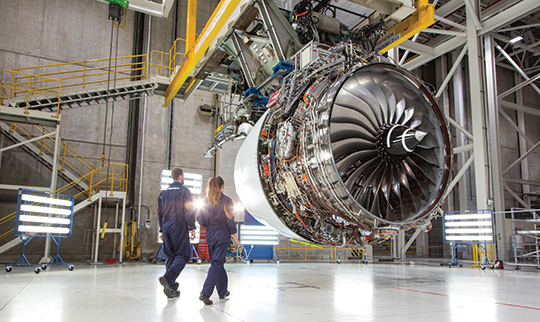
By Dr John Newnham, fastener engineering consultant, janewnham@btinternet.com
The commercial aerospace industry seems to have broken away from the seven or eight year production cycle of ‘boom and bust’, which appeared for many years to be inevitable in this market sector. At this point in time, there have already been several years of growth in the sector, with production rates continuously being ramped up. A 2016 report by Deloitte, analysing the order backlog of commercial aircraft, shows that at current production rates it would take well over nine years to fill existing orders.
This level of activity is fuelled by the increased profitability of the airlines over recent years, and a long-term growth in passenger travel, which at the moment shows no sign of stopping. There is also the promise of significant gains in fuel efficiency in new aircraft. It is projected that new planes, with newly designed engines, will be able to operate using 15% less fuel than existing equivalents. This is a huge cost saving, even in times of relatively low fuel costs.
In order to reduce the delivery lead times, aircraft manufacturers are committed to further increases in production rates, and to do this, they need to secure increases in component supplies not only from existing suppliers, but from new ones if they can find them. At least one OEM has tried in the recent past to promote interest from manufacturers of automotive and commercial fasteners in making aero parts. The reason for this is that the OEMs believe they will be able to purchase fasteners at lower prices, like the car makers do.
Fastener manufacturers outside of the aerospace industry have a perception that profit margins in the manufacture of airframe or engine parts would be higher, because the unit prices are significantly higher than prices they are able to charge. They also see that the vast majority of the supply of airframe or aero engine fasteners is still provided by manufacturers in the western world, so the risk of price erosion by Far Eastern manufacturers may be less.
As a fastener engineering consultant, one of the questions I was asked frequently in the recent past by manufacturers of automotive and industrial fasteners was ‘what do we have to do to make parts for aerospace?’ For companies working on relatively low margins or having to compete with prices of parts from China or India, supplying fasteners into the aerospace sector seems like it could be the answer to future viability.
Supply requirements
However, it is not possible simply to contact an aerospace OEM purchasing department and be allowed to bid to supply parts. There are requirements that fastener suppliers must usually meet before a bid is allowed, and this applies especially to the supply of critical fasteners in the airframe or engine. The first of these is an approved quality management system (QMS), which is specifically designed for aerospace OEMs. This is not usually evaluated by the OEM itself, because aerospace companies now accept third party audits of quality systems to a standard identified as AS 9100 – published by the US Society of Automotive Engineers. This standard incorporates all aspects of ISO 9000, with several additional requirements that are considered necessary to ensure parts of the highest quality will be delivered. For all airframe and engine parts supplied to the major commercial aircraft manufacturers, a QMS to this standard is mandatory. Some OEMs will still conduct an audit of their own to over check special issues before they give their quality approval, but in general AS 9100 will suffice. For non-critical parts, for example some in-cabin components, ISO 9000 may be acceptable, but the critical fasteners are the ones that command the highest prices.
This special aerospace qualification is not the end of the up front approvals that are usually needed. There is a second level of qualifications that must be met. Most fasteners for airframe or engine applications will require heat treatment and/or surface coating, and these processes are termed ‘special processes’. Each such process requires a separate third party approval, which is in addition to the QMS. These processes are assessed by Nadcap (National Aerospace and Defence Contractors Accreditation Program) against customer, national and international specifications. The Nadcap programme is administered by the Performance Review Institute, which is part of SAE.

In effect these special processes require a separate quality management system for the running of the facility, with mandatory regular checks of the technical capability of the equipment being used. After manufacture, and usually before coating, most aerospace fasteners are required to be non-destructive tested. This is also designated as a ‘special process’ and has a Nadcap standard that ensures the test equipment used and the testing itself will reveal if there are surface defects in the parts. After each batch of parts has been finished, they will need to be tested for mechanical and metallurgical properties, to an extent much greater than for automotive or construction parts. The test laboratory where this is done will need to have a separate QMS approval in conformance with ISO 17025 and/or Nadcap, which includes each type of test that the laboratory needs to perform for the various parts under inspection.
Of course, these ‘special processes’ need not be conducted at the same site as the manufacturing and can be sub-contracted, but the accreditations are needed to the same Nadcap standard, and the same applies to the test laboratory where the mechanical and metallurgical tests are done.
A third level of approval is required for critical parts, and that is a separate set of test audits for specific parts or for families of parts of similar configuration. For example, high strength steel fasteners that are specified by the procurement specification BS A241 can only be manufactured by a facility that is A241 approved. This type of parts approval will usually consist of a series of mechanical, metallurgical and non-destructive tests on an initial production lot of parts, and in many ways it is similar to a PPAP. The manufacturing route for the parts must be declared, and if all of the tests conform to the required specification, the manufacturing route may not be changed in the future without repeating some or all of the qualification tests. These parts approval tests may be conducted by the OEM, especially if the OEM has design authority for the parts being made, and may sometimes be done after a bid has been accepted for manufacture. So under normal circumstances, the first two of these levels of qualification need to be in place before a bid is accepted to make parts. Because these first two levels of approval are granted by a third party agency, they require a significant amount of resource investment. Also, as a general rule, the OEMs will not sponsor new approvals of specific parts (the third level of approval) unless there is a significant cost advantage to them.
Perhaps the simplest method of being adequately qualified is to use accredited sub-contractors for all of the secondary operations, including the testing, and focus on gaining the QMS approval. This has the benefit of reducing the up front resource commitment, but has the negative effect of increasing the cost of producing fasteners. However, before committing any resource into aerospace quality approvals, it would certainly be worth finding out whether any of the OEMs would welcome a bid for any parts. With the huge task of increasing supply volumes, they may want to develop additional suppliers. On the other hand, one purchasing manager has told me that if they were to develop new suppliers, they would not be based in the western world. So, in this case, any effort to obtain aerospace approvals could be in vain.

Will joined Fastener + Fixing Magazine in 2007 and over the last 15 years has experienced every facet of the fastener sector - interviewing key figures within the industry and visiting leading companies and exhibitions around the globe.
Will manages the content strategy across all platforms and is the guardian for the high editorial standards that the Magazine is renowned.
Don't have an account? Sign Up
Signing up to Fastener + Fixing Magazine enables you to manage your account details.